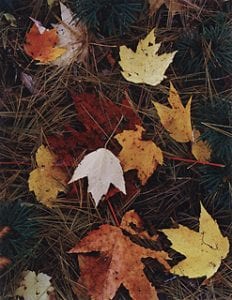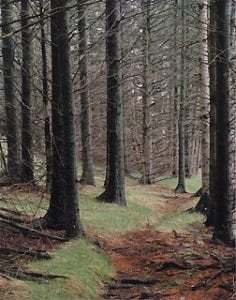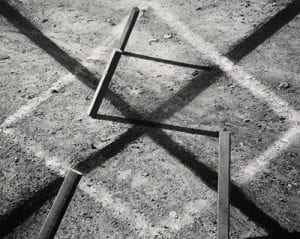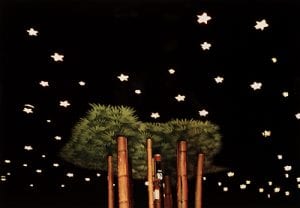
- This event has passed.
PORTFOLIOS from the LUAG Permanent Collection: Porter, Genovés, New California Views
August 3, 2009 - December 11, 2009
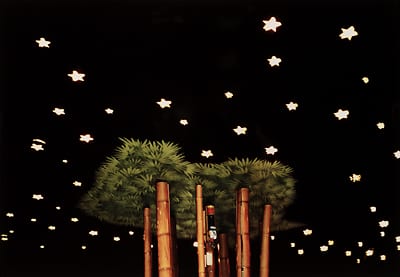
Limited edition portfolios of photography and printmaking from the university’s permanent collection reflect multiple aspects of 20th century contemporary art and artists. Each portfolio also represents an aesthetic unit or conceptual essay, complete with title, introduction and notes on technical production.
Our seven galleries on three campuses are visual laboratories of our teaching collection. The mission of Lehigh University Art Galleries/Museum Operation is to inspire, develop and promote visual literacy through cross-disciplinary educational opportunities that supplement formal classroom study to benefit students, faculty, and the community at large.
Eliot Porter: In Wildness
Published in an edition of 300 copies by Daniel Wolf Press, Inc., New York, 1981
Eliot Porter grew up in Winnetka., Ill., a town north of Chicago. His father, James Foster Porter, introduced him to nature in the wooded surroundings in Illinois, and later on Great Spruce Head Island in Penobscot Bay, Maine. Porter began taking pictures with a Kodak Brownie box camera when he was 11 years old, initially photographing birds around his two homes. Inspired by a high school chemistry class, Porter studied biochemistry and bacteriology at Harvard University before receiving a degree in medicine from that university in 1929. He soon found himself more interested in taking pictures than conducting laboratory experiments. In 1934, his brother, the painter Fairfield Porter, arranged for him to meet Alfred Stieglitz, who, impressed with Porter’s work, exhibited some of the artist’s landscape photographs at his gallery, An American Place, in late 1938. That show induced Porter to become a full-time artist. Shortly thereafter, seduced by color’s realism, Porter became one the first established artists to commit to exploring the new medium of color photography.
The Dye Transfer Process is different from most other forms of color photography. In other processes, colored dyes are already present in the photographic paper, and the color image is developed all at once. In dye transfer printing, cyan, magenta and yellow dyes are transferred individually onto a single sheet of paper, producing a full-color image. This complex and labor-intensive color print process allows precise control over image color. Each dye can be adjusted separately, intensifying one while not affecting others. As a result, dye transfer prints provide excellent color saturation and unusual brilliance.
SOURCE: Amon Carter Museum, Fort Worth, Texas
Juan Genovés: El Lugar y el Tiempo
Executed by the artist at Lacourière Frélaut in Paris, 1971
Published by Marlborough Graphics in 1973
Historians generally characterize Spanish artist Juan Genovés as a social realist, known for expressing his social and political views. He grew up during the devastation of the 1930s Spanish Civil War, which, along with the repressive post World War II Franco regime in Spain, became the foundation for his depiction of war and injustice in his work. During the 1960s, tensions increased between Spanish citizens and the oppressive regime. This series of prints, El Lugar y el Tiempo (The Place and the Time), 1971, recalls the darker moments of Spanish history. Demonstrators are portrayed running from the franquista police, clinging together, scattering, and falling. The series also demonstrates a cinematic influence in its fragmented frames, switching from wide views to close-ups, and a grainy quality reminiscent of black and white documentary film footage.
Aquatint is a form of intaglio printmaking, like etching, drypoint, or engraving. These processes involve the incision of lines or images into a surface of a plate, which is usually metal. The whole plate is inked and then wiped to remove the ink from the plate’s surface, leaving ink only in the incised areas. Paper is then dampened so that, under pressure, it will be squeezed into the inked recesses of the plate. In aquatint a more subtle tonal range is achieved by using powdered resin to create a pitted, grainy surface on the metal plate. This textured surface holds a thin layer of ink that prints as an area of tone.
SOURCE: University of Maryland and Pace Prints, New York
New California Views
Published in Los Angeles in 1979 by Landweber/Artists
While views of California are not new, a great intensity of effort has been expended in recent years by artists working in photography who have created remarkable new views of California.
When one thinks of landscape photography, one is apt to recall the famous images of California’s giants of the medium: Muybridge, Weston, and Adams. Their monumental pictures have not only shaped our vision of this single geographical region, but also informed the entire world of photography’s potential for greatness in imaging the land.
However, the best recent photography in California has moved beyond the former generations’ discoveries and descriptions of California’s magnificence. Rather, these photographers’ images, marked by intelligent, educated vision and gentle but penetrating irony, allow us to see the state as having become a backdrop before which their scenes occur and about which their images comment critically.
It is an emphatic contrast with this earlier work that allows us to see, most particularly in the continuing evolution of the image of California, who it is that we may once have thought ourselves to be and what it is that we now believe ourselves to have become.
Victor Landweber, July 1979
